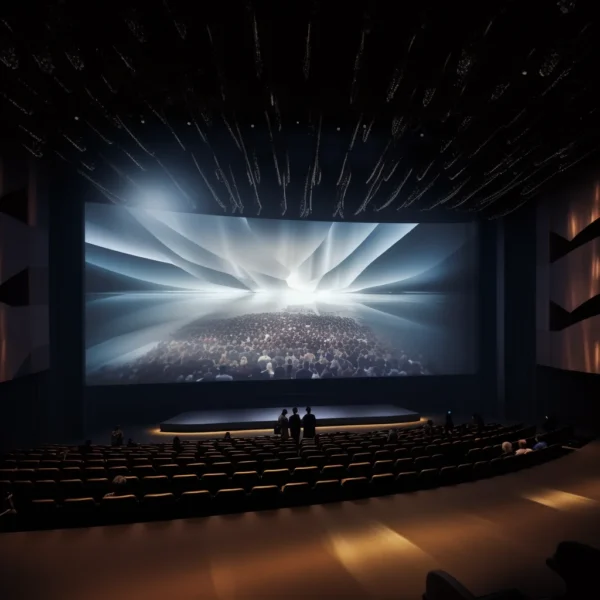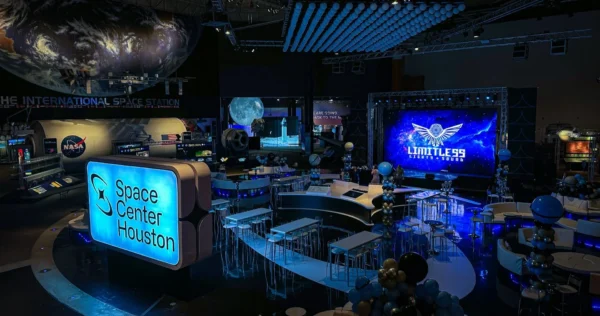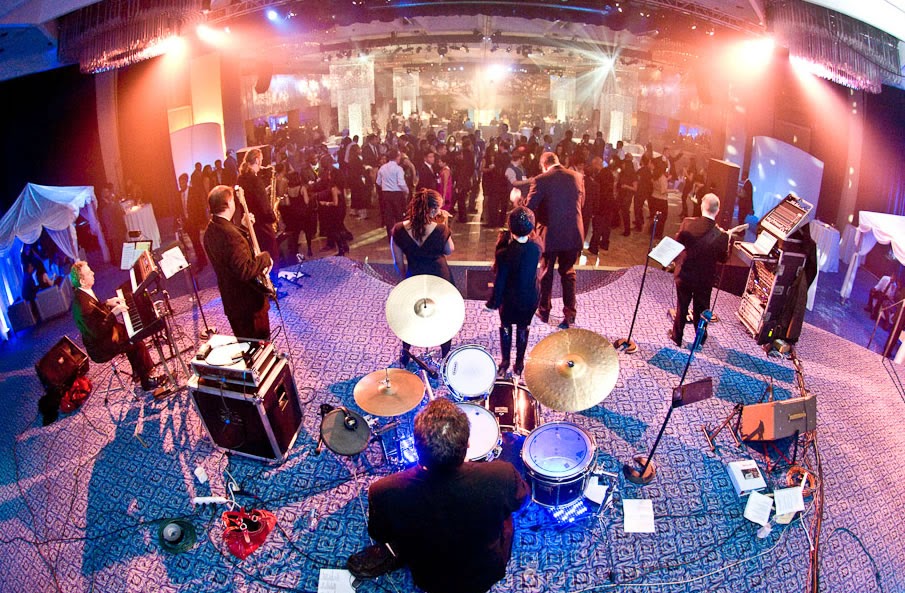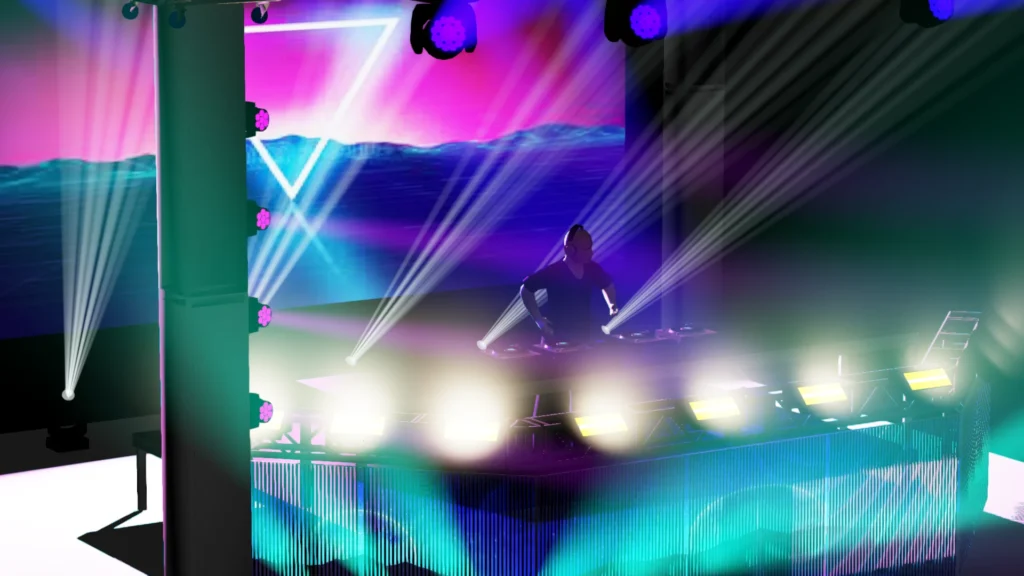
INTRODUCTION TO PRODUCTION DESIGN CAD SOFTWARE FOR LIVE EVENTS
While this guide is by no means the end-all-be-all of design, we have done our best to compile the most relevant design software.
In the world of live events and production, lighting design and pre-visualization software play a crucial role in creating memorable experiences for audiences. These software programs enable designers to create, visualize, and fine-tune lighting setups for stages, concerts, theatrical productions, and other live events before the actual implementation of the lighting or rigging system. By using these advance tools, you can ensure that your production design complements the overall team and enhances the audience’s experience.
Investing in lighting design and pre-visualization software can provide a massive level-up for your production company. These tools will help you:
- Save time and resources: By using these software programs, you can visualize and tweak your lighting design before committing to expensive equipment rentals from a production company and get an idea of the required on-site labor. This can reduce the time spent on troubleshooting and making adjustments during the actual event setup.
- Improved collaboration: Lighting design software enables seamless collaboration among team members as you bounce your files back and forth, allowing for real-time feedback and adjustments. This helps ensure that everyone is on the same page and working towards a unified vision for the production. It also streamlines the workflow between the programming and design teams allowing them to integrate seamlessly together and become prepared for the shows.
- Enhance creativity: In pre-production, these tools allow you to experiment with various lighting setups, colors, and effects without the constraints of setting up the physical equipment in the shop. This freedom encourages creativity and allows you to explore new ideas that might not have been possible otherwise.
- Deliver professional results: By using this professional software, you can create accurate and realistic visualizations of your lighting design. This can help you present your ideas to clients or stakeholders more effectively, ultimately resulting in a more polished and professional final product, and a more robust sales pipeline.
COMPARING THE BEST CAD SOFTWARE FOR PRODUCTION DESIGN
2.1. Vectorworks Spotlight: The Industry Standard
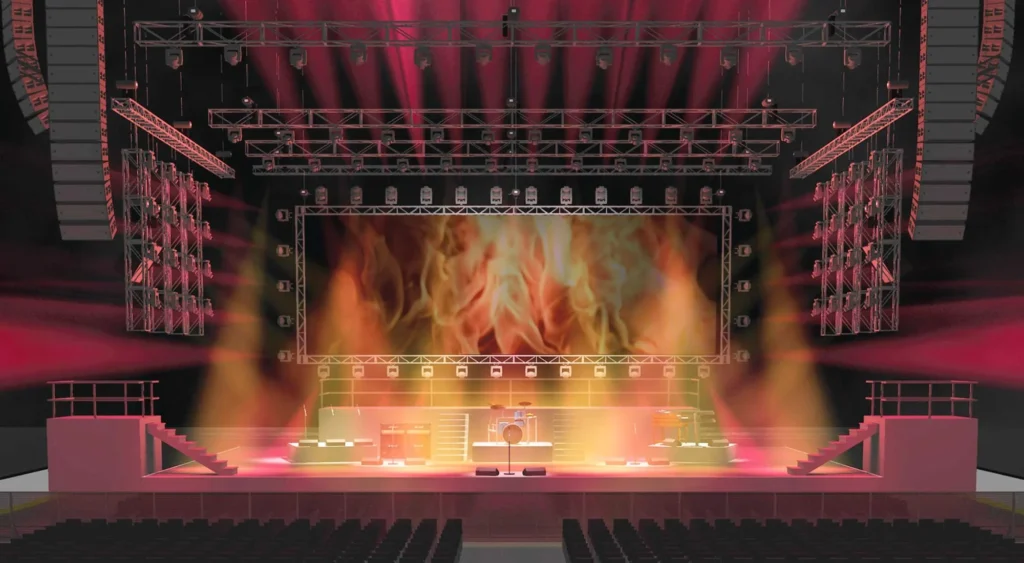
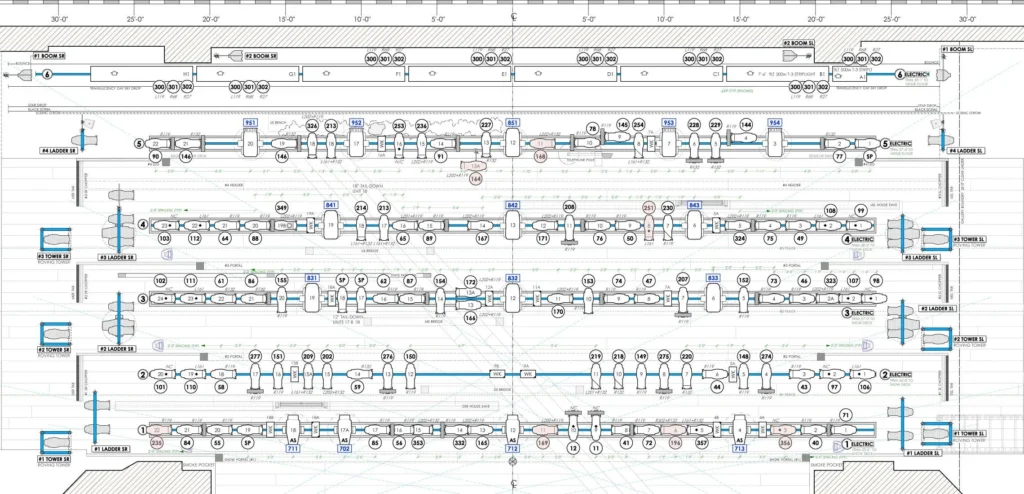
Vectorworks Spotlight: A comprehensive and industry-leading CAD software tailored specifically for entertainment design, Vectorworks Spotlight offers advanced tools for designing and planning lighting, scenic elements, and rigging for live events.
Website: www.vectorworks.net/spotlight
Cost: Pricing varies based on region, but a new license typically costs around $2,895, and an upgrade costs around $1,045. Educational and student discounts are available.
Features:
- 2D drafting and 3D modeling capabilities
- Built-in rendering engine (Renderworks) and compatibility with other renderers (e.g., V-Ray)
- Integration with various lighting consoles (e.g., grandMA)
- Lighting device library and custom device creation
- Rigging and truss tools
- Seating layout tools
- Venue and scenic design tools
- Reporting and documentation features
Drawbacks: Steeper learning curve compared to some other software, and rendering performance can be slow depending on the project size and hardware.
Limitations: May not have as robust real-time visualization capabilities as some of the other options.
2.2. Capture: Real-time Visualization for Lighting Design
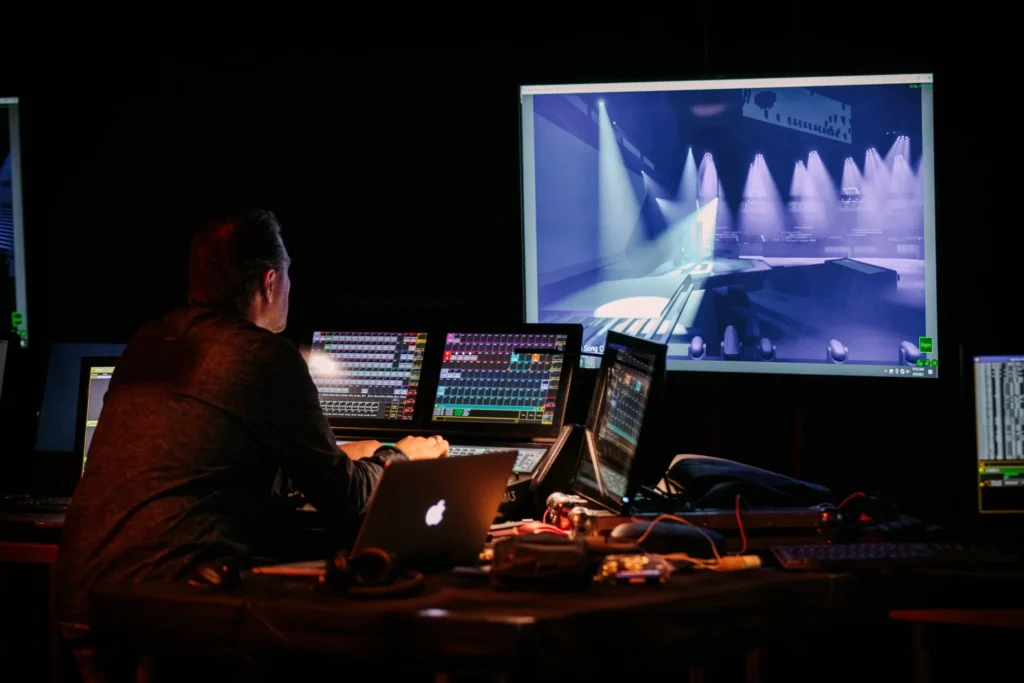
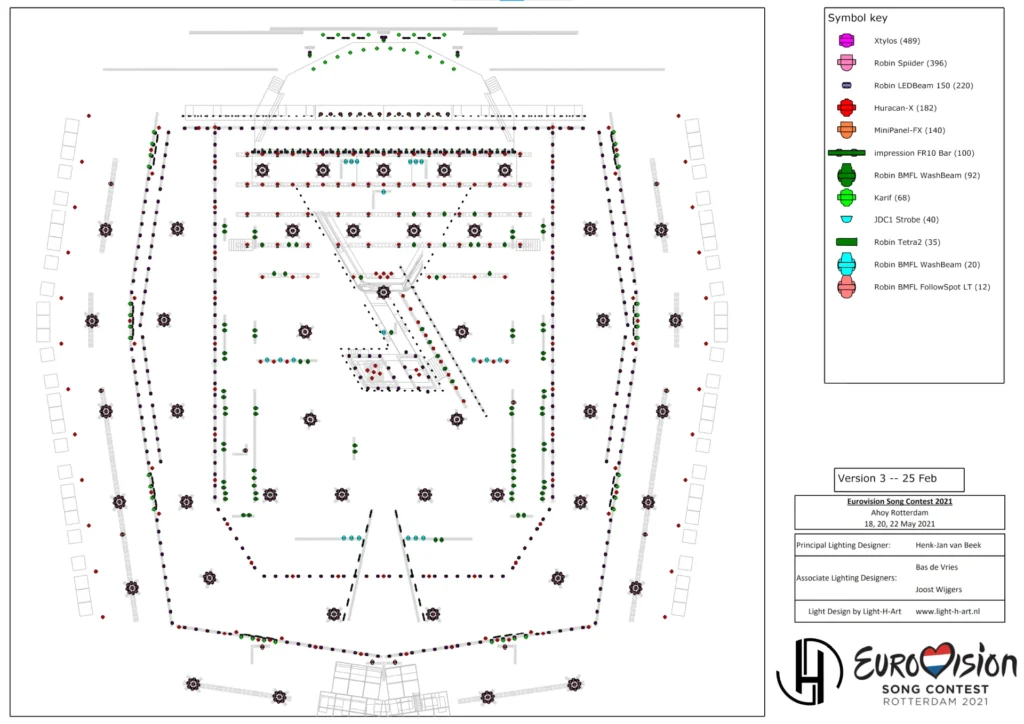
Capture is a powerful lighting design and visualization software for live events, theater, and entertainment. It allows you to create realistic 3D models of your stage design, and its real-time rendering capabilities enable you to visualize and adjust lighting on the fly.
Capture Website: www.capture.se
Cost: Capture offers several license options:
- Solo: €399
- Duet: €799
- Quartet: €1,599
- Symphony: €3,199 Prices are in Euros and exclude VAT. Educational discounts are available.
Features:
- Real-time visualization and rendering
- Integration with various lighting consoles and protocols (e.g., DMX, Art-Net, sACN)
- Library of lighting fixtures, trusses, and scenic elements
- Custom fixture creation and modification
- Video projection and LED panel simulation
- Laser and water effects simulation
- Multi-camera setup and recording
- Supports HDRI
- Connects with Beyond and Resolume
Drawbacks: May not have as advanced 2D drafting and 3D modeling tools as dedicated CAD software like Vectorworks Spotlight.
Limitations: The software is specifically focused on lighting design and visualization, so it may lack some of the scenic design and rigging tools found in other programs.
2.3. Vision: Seamless Integration with Lighting Consoles
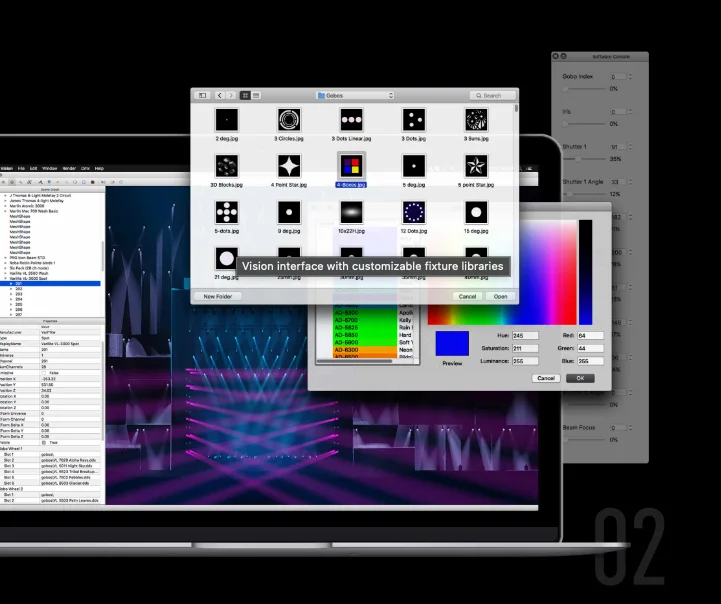
Vision is a popular pre-visualization software for live events, concerts, and theater productions. It integrates seamlessly with various lighting consoles and control systems, allowing you to visualize and program your lighting design in real-time.
ESP Vision Website: www.espvision.com
Cost: ESP Vision offers a variety of licensing options, including monthly, yearly, and permanent licenses. You can request a quote on their website for specific pricing information.
Features:
- Real-time visualization and rendering
- Integration with various lighting consoles (e.g., grandMA, ETC Eos, Hog)
- Library of lighting fixtures, trusses, and scenic elements
- Custom fixture creation and modification
- Video projection simulation
- Multi-camera setup and recording
- Virtual reality support
Drawbacks: May have fewer features compared to some other design software, as it focuses primarily on visualization.
Limitations: Lacks built-in 2D drafting and 3D modeling capabilities, so you’ll need to use other software for those tasks
2.4. wysiwyg by CAST Software: Comprehensive Design and Visualization
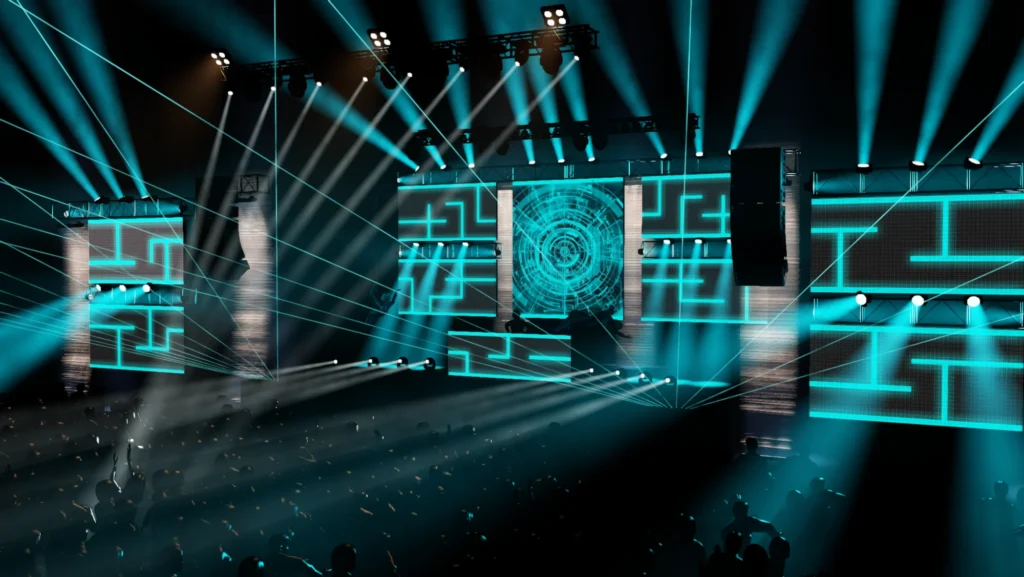

(What You See Is What You Get) by CAST Software: wysiwyg is a comprehensive lighting design, pre-visualization, and documentation software used in live events, theater, and architectural projects. It offers a range of tools for designing, rendering, and simulating lighting in a 3D environment.
wysiwyg by CAST Software Website: www.cast-soft.com
Cost: CAST Software offers a range of wysiwyg license options, including monthly and yearly subscriptions, as well as educational discounts. You can request a quote on their website for specific pricing information.
Features:
- 2D drafting and 3D modeling capabilities
- Real-time visualization and rendering
- Integration with various lighting consoles and protocols (e.g., DMX, Art-Net, sACN)
- Library of lighting fixtures, trusses, and scenic elements
- Custom fixture creation and modification
- Video projection and LED panel simulation
- Rigging and truss tools
- Reporting and documentation features
Drawbacks: Can have a steeper learning curve compared to some other software, and its pricing model may not be as accessible as other options.
Limitations: While it offers a wide range of features, the software may not be as user-friendly or intuitive as some other options.
2.5. LightConverse / L8: Intuitive Real-time Lighting Design
LightConverse (now newly improved as L8) is a real-time lighting and visualization software used for pre-visualization, design, and programming of live events, concerts, and theatrical productions. It supports various lighting consoles and control systems, making it a versatile tool for lighting designers.
Website: www.lightconverse.com / https://l8.ltd/m/ Cost: LightConverse offers several licensing options, including dongle-based licenses and rental licenses. You can request a quote on their website for specific pricing information.
Features:
- Real-time visualization and rendering
- Integration with various lighting consoles (e.g., grandMA, ETC Eos, Hog)
- Library of lighting fixtures, trusses, and scenic elements
- Custom fixture creation and modification
- Video projection and LED panel simulation
- Laser and water effects simulation
- Multi-camera setup and recording
Drawbacks:
Limitations: Its primary focus is on lighting design and visualization, so it may not have as many scenic design and rigging tools as other programs.
2.6. MA Lighting’s grandMA3D: A Solution for grandMA Users
grandMA3d is included with the purchase of a grandMA console or available as a free download for users of the grandMA lighting control system. Pricing for the grandMA console varies, so you may need to contact a local distributor for specific pricing information. MA Lighting’s grandMA3D: grandMA3D is a visualization software that works in conjunction with the grandMA lighting control system. It allows you to create 3D models of your stage or venue and visualize your lighting design in real-time.
These software options are specifically designed for the needs of production designers and lighting professionals in the live event industry. They enable you to create accurate and detailed visualizations of your lighting designs, helping to streamline the design and production process.
Features:
- Real-time visualization and rendering
- Integration with grandMA lighting consoles
- Library of lighting fixtures, trusses, and scenic elements
- Custom fixture creation and modification
- Video projection simulation
Drawbacks: The software is specifically designed for use with grandMA lighting consoles, so it may not be suitable for users who work with other consoles or control systems.
Limitations: Lacks built-in 2D drafting and 3D modeling capabilities, and may have fewer features compared to some of the other visualization software options.
RECOMMENDED COMPUTER SPECIFICATIONS FOR OPTIMAL PERFORMANCE
When choosing or building a computer for using these kinds of software, it’s essential to have a powerful system that can handle the demands of 3D modeling, rendering, and real-time visualization. Recommended computer specifications include:
- Processor: A modern, multi-core processor (Intel Core i7 or AMD Ryzen 7 or higher) for efficient processing and smooth performance.
- Memory: At least 16GB of RAM, although 32GB or more is recommended for optimal performance with large projects.
- Graphics Card: A dedicated graphics card with at least 4GB of VRAM (NVIDIA GeForce GTX 1060, RTX 2060, or higher / AMD Radeon RX 570, 6700 XT, or higher) to handle rendering and real-time visualization tasks.
- Storage: A solid-state drive (SSD) for faster data access and improved overall system performance.
- Operating System: A 64-bit operating system, such as Windows 10 or macOS, depending on the software’s compatibility requirements.
Keep in mind that the exact requirements may vary depending on the specific software you choose. It’s always a good idea to consult the software’s system requirements and recommendations for the best possible performance.
CONCLUSION: CHOOSING THE BEST PRODUCTION DESIGN CAD SOFTWARE FOR YOUR NEEDS
In conclusion, landing on the best production design CAD software for your needs ultimately depends on your specific requirements, budget, and workflow preferences. Each software option mentioned in this article offers a unique set of features and capabilities tailored to various aspects of live event production, lighting design, and pre-visualization.
Before making a decision, consider the following factors:
- Evaluate your design needs and priorities: Determine which aspects of the software are most important for your projects, such as real-time visualization, extensive fixture libraries, or seamless integration with lighting consoles. For example, Vectorworks will allow you to link objects to cables, whereas this is not supported yet in capture. If you’re doing detailed diagrams that are highly technical and require the utmost precision, maybe something like VWX is better for you.
- Assess your budget: Compare the pricing models and license options of each software to find a solution that fits within your budget while still providing the features you need. You may not need highly technical and complicated software that is extremely expensive to just show basic DJ lighting or wedding lighting renders.
- Consider ease of use and learning curve: Some software may be more intuitive and user-friendly than others, so think about how quickly you and your team can become proficient with the chosen software.
- Hardware compatibility: Make sure your current computer setup meets the recommended system requirements for the software you’re considering, or be prepared to invest in upgrading your hardware if necessary.
- Test drive the software: Many software providers offer trial versions or demos, which allow you to test the software’s functionality and user experience before making a final decision. While some of these are limited in different ways such as saving, parameter outputs, rendering etc. most of the trials should give you a great idea of the functionality.
By carefully considering these factors and evaluating each software’s features, limitations, and user experience, you can make an informed decision and choose the best production design CAD software for your live event projects. With the right tools in place, you can streamline your design process, enhance collaboration, and ultimately create unforgettable experiences for your audiences.
